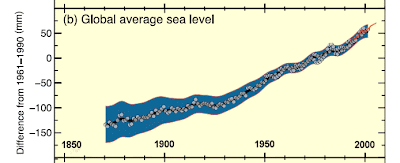IPCC TECHNICAL ASSESSMENT REPORT 5 – THESIS 3

Thesis: The presentation of sea ice in TAR4 used only a sub-set of the data. It should use a wider range of data with reference both to data which were available at the time of TAR4, and data which have become available since. The technical summary presents the following set of graphs: The way the graphs are presented is reminiscent of graphs of return on investment of rivals presented by some of the less honest financial intermediaries. Those for the Arctic are presented as anomalies with a scale set so that the full range fits in the rectangle and it seems as if ice extent has fallen close to zero. For the Antarctic, where the area of ice has been tending to increase, they have used the same scale which conveniently minimises the increasing tendency of Antarctic ice. The following graph presents the same data, updated to May 2010, but as extent not anomalies. This very clearly shows that on average there are similar areas of sea ice in the Arctic and Antarctic, that th

